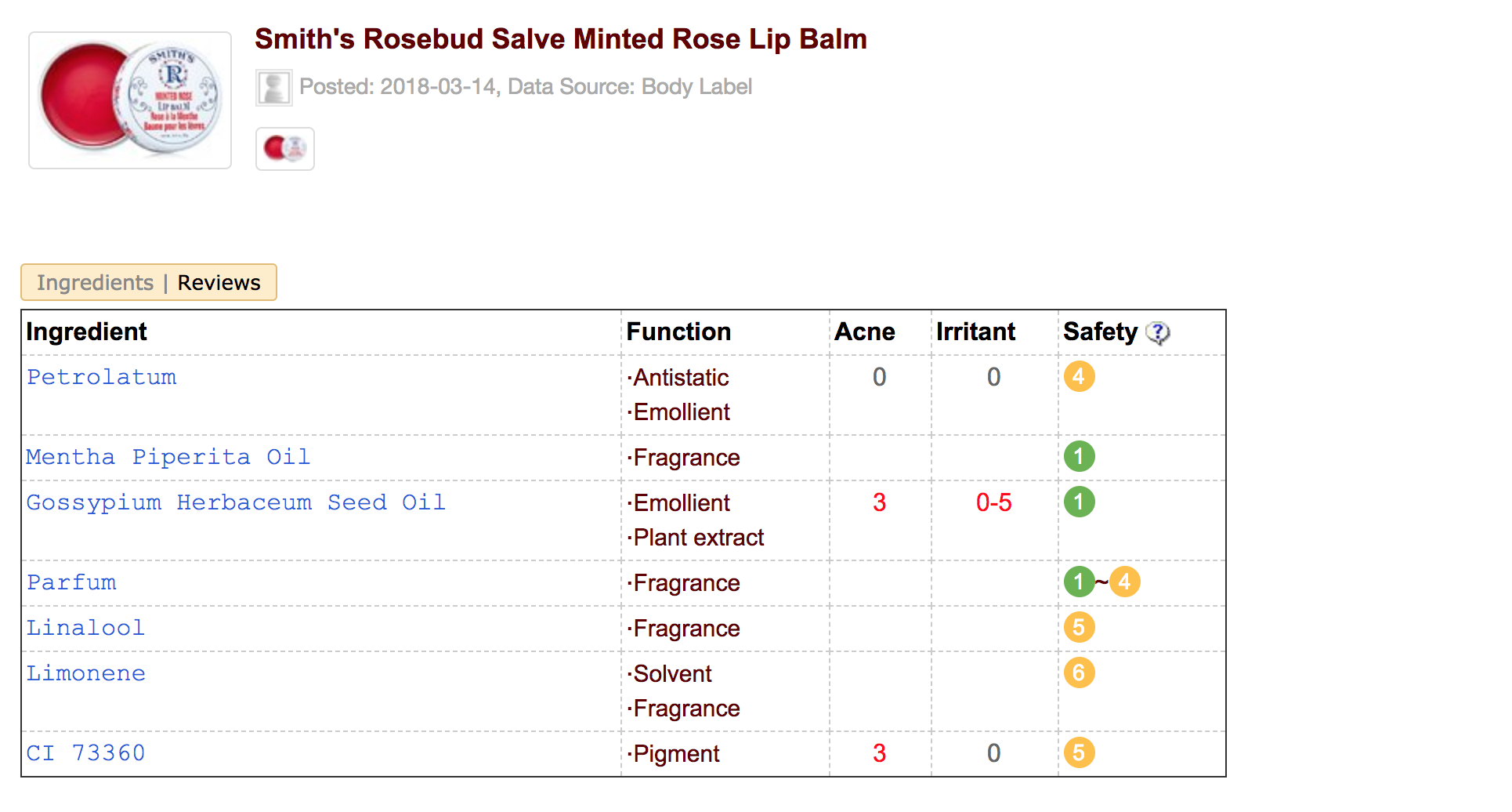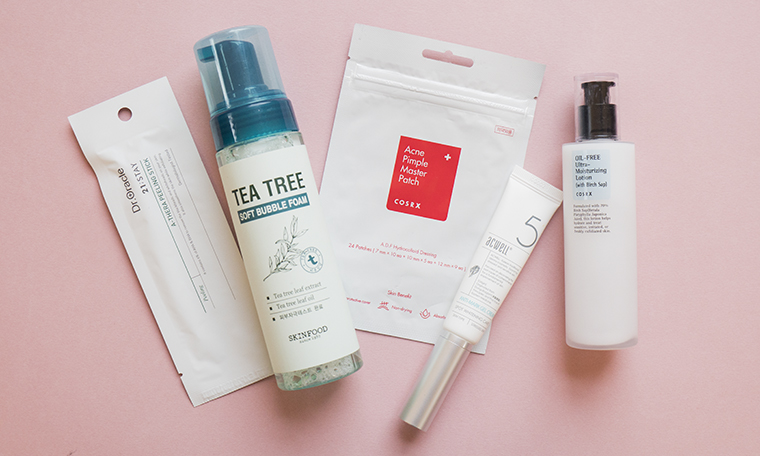We here at the Klog, as much as possible, want the Klog to be a conversation. So, when a bunch of you reached out to us about CosDNA, we decided that we needed to do some digging.
First, we reached out to CosDNA who were not available for comment (we will update this post if they respond). Then we decided to reach out to beauty industry experts: Michelle aka Lab Muffin, a PhD in chemistry who has made it her mission to show that anyone can understand the science behind skin care and beauty, and Stephen Ko or Kind of Stephen, Reddit’s resident Cosmetic Chemist. Here’s what we found…
What is CosDNA?

CosDNA, at its very core, is a product and ingredient database. Users are able to submit products and ingredients to CosDNA for review.
For product reviews, CosDNA rates each ingredient for function, UV, acne, irritant, and safety. Comedogenic/acne, irritation, and safety are rated on a scale from 1-9. The lower the number, the less chance it will irritate the skin. For many ingredients, there will be spots left blank meaning that there is no data for this particular ingredient (not necessarily that the ingredient is safe or unsafe).
For ingredient reviews, CosDNA will review the function for a product, as well as its molecular weight and CAS number. The CAS number, also referred to as CASRN, is short for CAS Registry Number. This number is assigned by the Chemical Abstracts Service (CAS) and is unique and individual per chemical substance as found in open scientific literature.
Is the information on CosDNA is legitimate?
The short answer: It’s hard to say.
Speaking with Michelle, she tells me, “I actually don’t really like CosDNA because they don’t cite their sources, which makes it impossible to tell if the info is legitimate. They just say, ‘our data source include international experts, institutions, and publications,’ which means you can’t even check.”
Stephen expressed similar mistrust, saying, “CosDNA lists some of the resources they use, but they don’t list or source the specific literature for each claim. So it’s impossible to know whether the data was gathered on humans, animal models, or something else. In terms of comedogenicity, rabbit ears were a common model but is no longer considered relevant to humans. In terms of toxicity, the results from a 100% concentration of the ingredient vs. a 10% concentration of the ingredient are likely to produce very different results.”
Is there a downside to only looking at ratings for products?
Stephen explains: “I think if you’re only using ratings as the only source, then you’re missing out on a lot of potential things. We’ve probably all liked a movie despite a low Rotten Tomatoes rating or disliked one with a high rating. It’s difficult to compress data down to a number. Also keep in mind ingredient lists aren’t very transparent; we don’t have much information really in terms of concentration of the ingredient.
“We also don’t know the purpose,” he says. “For example silica can be used as an absorbent, a thickener, or in some cases as an encapsulating material. It also comes in different particle sizes, and porosities—so will have different functions in the product as well. But all those materials from different suppliers and companies are all listed as silica.”
Michelle adds, “Ingredients can interact and have different effects in the final product, plus the percentages make a big difference (the dose makes the poison).”
Asian Beauty Reddit users seemed mixed on the legitimacy of CosDNA. Some said that they do have skin that generally agrees with CosDNA ratings and therefore found the database helpful. Others disagreed, feeling that CosDNA overreacts and red flags a lot of ingredients which are not generally dangerous or bad for their skin and therefore, they take each rating with a grain of salt.
Is there a downside to looking at specific ingredients over “big picture” products?
Absolutely. Michelle explains to me that, “a lot of the time comedogenicity,” which is a primary reason that people use databases like CosDNA, “is a result of the combination of different ingredients, and percentages often can’t be worked out from the ingredients list.”
Stephen agrees: “It’d be like visiting a bakery and just being shown the ingredients of the confections and ordering based off that. Things like ingredient lists may feel like data, but they’re not as robust as they may seem.”
Asian Beauty Reddit users expressed similar sentiments. User herezy explained that “Aside from the arbitrary nature of the ratings, the problem with viewing ingredients individually is you miss the bigger picture: ingredients concentration matters a lot, and ingredients interact between each others. A simple exemple is PH adjusters. They’re super acidic or super basic, which is dangerous to skin, but if they’re used in tiny quantities to adjust the overall PH, they’re beneficial as hell. Also, alcohols are drying, but they can be used to make super humectant-rich products less sticky, so the overall product might be super hydrating.”
What’s the right way to use an ingredient database?
Michelle tells us, simply, “with a massive grain of salt!” Stephen agrees: “I think they’re a great way to look up ingredient lists and do some basic and quick, comparisons. I still think reviewers are the best way to capture the holistic results and experience of a product.”
Are there any ingredient databases that people should use instead of CosDNA?
Stephen tells us, “I think it’s probably best to visit a variety of different sources and come up to a conclusion of your own. No database is the ‘best’ or complete. Many people have moved into this market, some using AI and other buzzwordy terms, but the reality is that the data is generally lacking and often not comparable for ingredients.”
Michelle says, “I like that Paula’s Choice tells you a bit more about the ingredients and they cite their sources, although a lot of the time their sources don’t say what they claim it says. I haven’t used INCIDecoder much yet but from looking around it a bit I’m not sure I trust the descriptions—I think they might get some of their information from Truth in Aging which isn’t very reliable.”
The Bottom Line
Ingredient and product databases can provide some insights into whether you should buy a product or not before buying, but nothing beats real reviews and trying the product itself. Databases, especially ones which don’t cite their sources, should be taken with a grain of salt. Pay attention to your ingredient lists, but they shouldn’t be your only source of literature. The best way to test products for yourself is to patch test in order to understand how your skin reacts.









